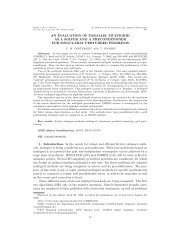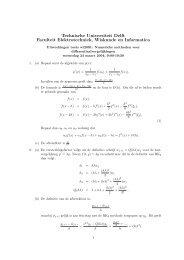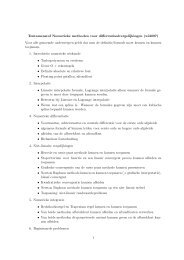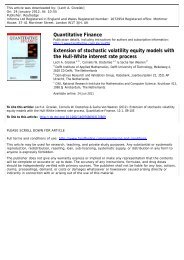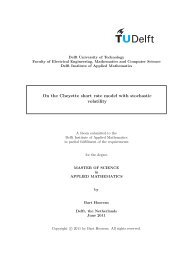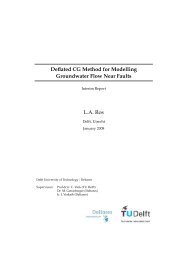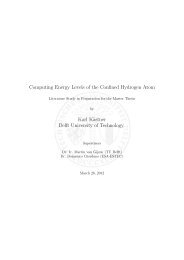Create successful ePaper yourself
Turn your PDF publications into a flip-book with our unique Google optimized e-Paper software.
Let us consider the following problem. We want to solve the Laplace Equation on domainΩ partitioned as shown in the figure above. Domain Decomposition methods attempt to solvethe problem on the entire domainΩ =s⋃Ω i (5.1)i=1from the problem solution on the subdomain Ω i . There are several reasons why this approachcan be advantageous. First of all, the subdomains may have a simpler geometry then Ω. Alsosometimes the problem may have a natural split into smaller regions, in which we can havedifferent equations that describe the model. However maybe the most important reason to useDomain Decomposition Methods is the fact, that they are the best choice for the solution of aproblem, if we want to parallelize the computational process. Last, but not least, they allowus to deal with the lack of memory, by splitting the domain into parts which will fit into ourcomputers.There are several methods in the Domain Decomposition family. This report presents onlysome of them.5.2 Schwarz Alternating ProceduresThe earliest known domain decomposition method is the alternating method of H. Schwarzdating back to 1870. It consisted of three parts: alternating between two overlapping domains,solving the Dirichlet problem on one domain at each iteration and taking boundary conditionsbased on the most recent solution obtained from the other domain.Let’s consider a domain Ω as shown in Figure 5.1 with two overlapping subdomains Ω 1 and Ω 2on which we want to solve a PDE of the following form:{ Lu = f, in Ωu = g, on ∂Ω . (5.2)Let ∂Ω denote the boundary of Ω and the artificial boundaries, Γ i , are the part of the boundaryof Ω i that is interior to Ω, and s is the number of subdomains. Schwarz Alternating Procedure(SAP) for s subdomain problem will be of the following form:Schwarz Alternating ProcedureIn our case, s = 2.Choose u 0WHILE no convergence DOFOR i = 1,...s DOSolve Lu = f in Ω i with u = u ij in Γ ijUpdate u values on Γ ij , ∀jEND FOREND WHILE (5.3)22




